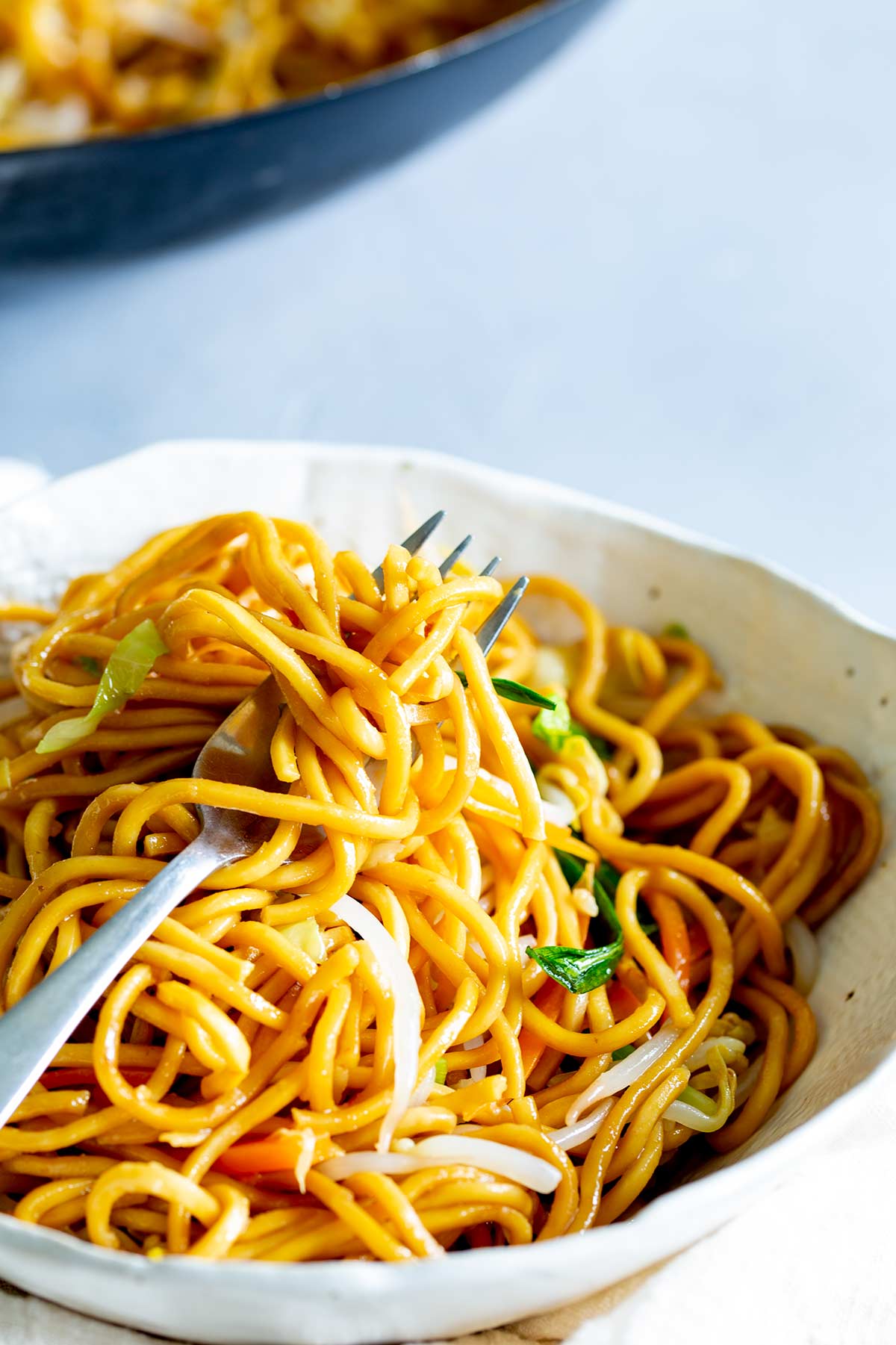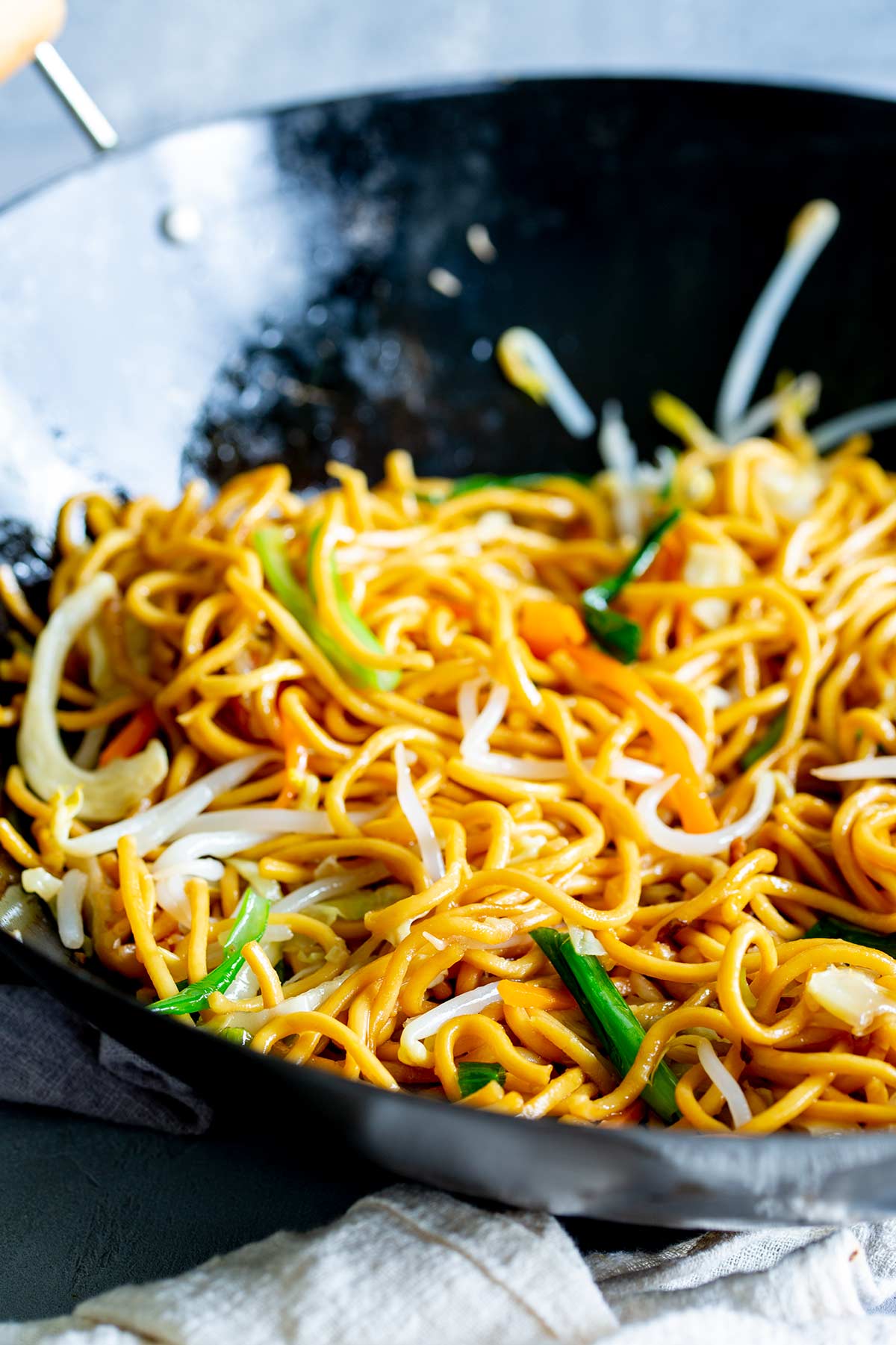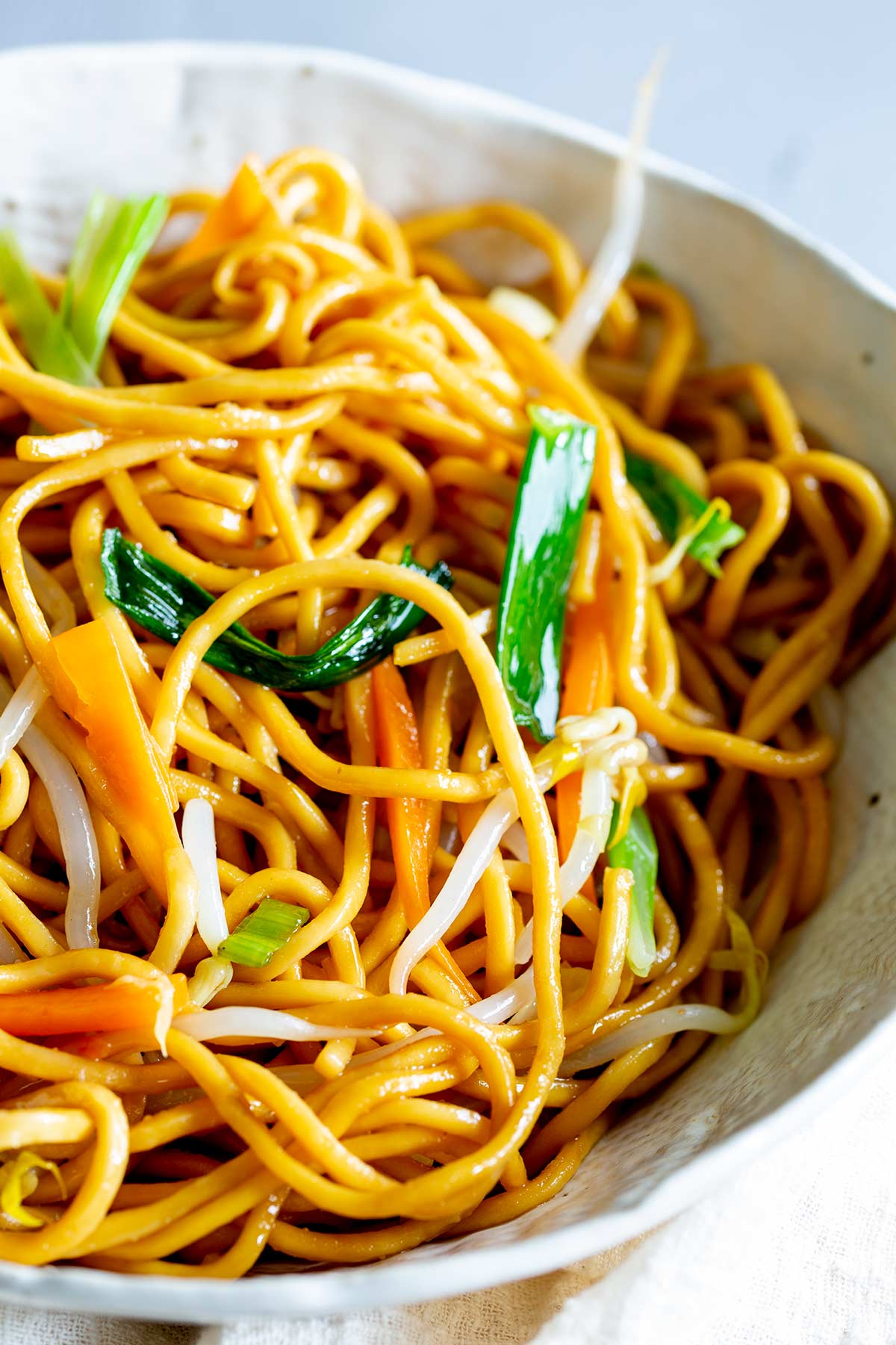Key Ingredients for Takeaway Style Chow Mein:
- The Chow Mein Noodles: Made with wheat and egg, chow mein noodles are yellow in color. You can find them in most grocery stores. And they often come both fresh or dried. Follow the instructions on the packet. It is necessary to soak or boil the dried ones in water beforehand. Rinsing fresh ones frequently eliminates any flour or oil residue. Make sure to thoroughly drain them after they have been cooked, soaked, or rinsed, then place them aside to dry off. This will guarantee that the noodles get stir-fried to perfection.
- The Vegetables: Carrots, green cabbage, spring onions, green onions, and bean sprouts are my favorites for a classic takeout-style chow mein. They resemble noodles when cut into thin batons, and they blend into the mixture flawlessly.
- Vegetable oil: The recipe’s oil is flavored with spring onions and green onions, giving the kitchen a takeout-like aroma. Please do not omit it or use less oil as it is an essential step. This is a stir-fried dish of noodles; in order to fry the noodles and bring out their flavor, oil must be added. But it still comes in with a reasonable calorie amount. Far better than an actual takeaway!.
- It’s simple to locate oyster sauce at the grocery store. It is a flavorful, thick brown sauce that gives your noodles a lot of body. You can buy vegetarian versions.
- Chinese cooking wine: Usually found in the Asian section of grocery stores It goes by several other names, including Shaoxing wine, Shaohsing rice cooking wine, Chinese rice wine, and Shaoxing cooking wine. If you don’t have access to Chinese cooking wine, use dry sherry or sake instead.

Do you need a wok for chow mein?
No, a wok is not necessary; a large frying pan will do just fine and even be preferable in some situations.
I’ve always enjoyed using my wok to cook because it always makes me feel proficient and expert. But I don’t like that I have to wash it by hand!
Almost all of my recipes for takeout discuss the importance of making sure your cooking vessel is as hot as possible. This is simpler to do on a gas stovetop because the flames can lick up the wok’s side. However, when using an electric stovetop, the area closest to the burner heats up the most.
This presents a challenge when stir-frying since you need a steady high heat. Therefore, I suggest using a large, heavy-based skillet or frying pan when making chow mein on an electric stovetop.
You can achieve excellent results when using a wok with a gas stovetop if you have a large gas burner or a wok burner. But so will a large frying pan or skillet.

Tips for making Chow Mein at home
- Purchase a bottle of Chinese Cooking Wine, sometimes referred to as Chinese Rice Wine or Chinese Shaoxing Wine, for that authentic takeout-like flavor. Most larger grocery stores have an Asian section, or you can easily find it online. The flavor of your chow mein will completely change when you use Chinese cooking wine.
- Make sure your noodles are ready to go. Before you begin cooking, have the dried ones you purchased cooked, drained, and dried. Before you start cooking, have the fresh ones you bought cleaned and dried.
- Chop your veg before you start cooking. Chow mein cooks quickly, so you want everything to be slightly cooked but still crisp, not mushy. So getting everything ready beforehand is a must.
- The same thing goes for the sauce ingredients. Have them mixed before you start cooking. Just make sure to give them one last stir before adding the noodles’ sauce.
